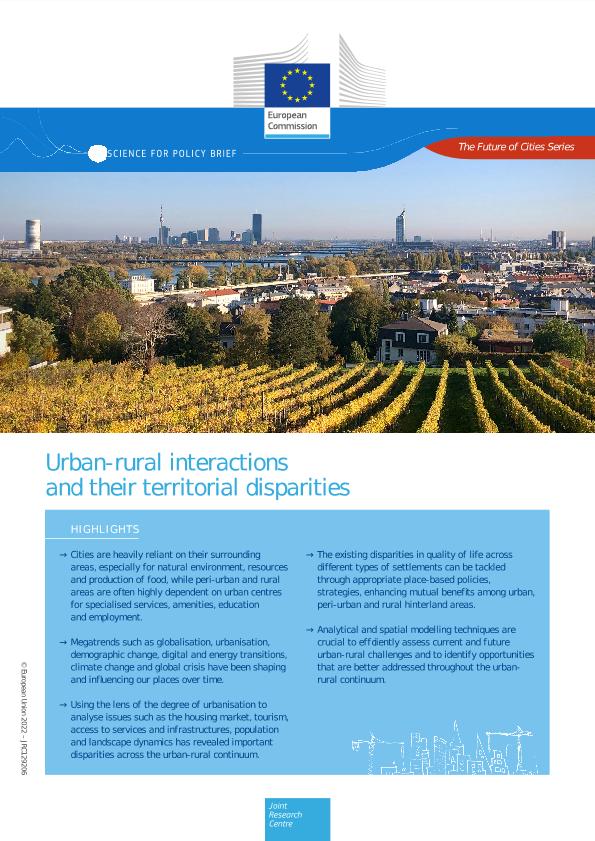Urban areas are usually considered the main centres of economic activity with a high population concentration, good infrastructure, service provision offering employment, social services, innovation and recreational opportunities that attract people to live there. However, cities are also heavily dependent on peri-urban and rural areas, especially for food production and basic products, management of natural resources, protection of natural landscape, as well as recreation and tourism. Mutual inter-dependencies exist over the continuum between urban, peri-urban and rural areas, conceptually described as ‘linkages’ or ‘flows’. These can be associated with people, goods and public services or environmental flows.
Under the lens of the degree of urbanisation, this policy brief analyses territorial discrepancies and flows between types of settlements across several dimensions such as accessibility of essential services and internet connection, the housing market, tourism capacity, as well as natural resources and population dynamics. Incorporating this territorial perspective, strategic development policies have gained momentum with a tendency to create large and strong functional regions with a focus on the enhancement and the intensification of urban-rural interactions that can help to reduce inequalities, and ensure the well-being of citizens and the development of balanced and sustainable territories.
| Year of publication | |
| Originally published | 11 May 2022 |
| Knowledge service | Metadata | Territorial (ARCHIVED) |
Share this page


Login (or register) to follow this conversation, and get a Public Profile to add a comment (see Help).